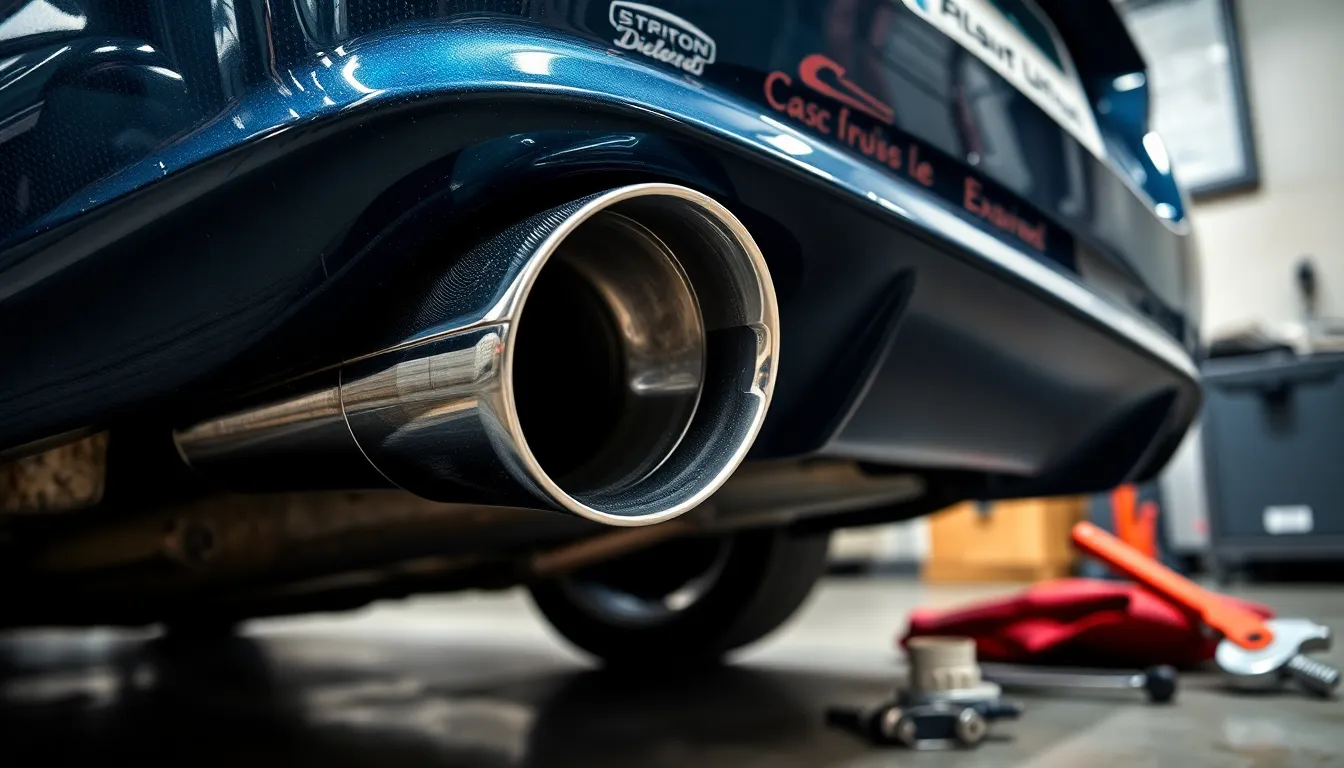We’ve all heard that distinctive rumble of a muffler delete echoing through the streets – but what’s the real cost behind that aggressive sound? Whether you’re looking to unleash your engine’s raw power or simply want that head-turning exhaust note muffler deletes have become increasingly popular among car enthusiasts.
The price tag for a muffler delete varies dramatically depending on your approach. DIY enthusiasts can complete the job for as little as $50-100 while professional installations typically range from $100-300. But the total investment extends beyond just the initial modification cost.
We’ll break down everything you need to know about muffler delete pricing including labor costs pipe modifications and potential legal considerations that could impact your wallet. From budget-friendly options to premium setups we’ll help you understand exactly what you’re paying for and whether this modification aligns with your performance goals and budget.
What Is a Muffler Delete?
A muffler delete removes the factory muffler from your vehicle’s exhaust system and replaces it with a straight pipe or resonator. This modification creates a direct path for exhaust gases to flow from the engine to the tailpipe without the sound dampening restrictions of the original muffler.
The process involves cutting out the existing muffler and welding in a replacement pipe that matches the diameter of your exhaust system. Most muffler deletes use straight through pipes made from stainless steel or aluminized steel materials. Some installations incorporate resonators to reduce excessive drone while maintaining the aggressive sound character.
Key Components of Muffler Delete Systems:
| Component | Purpose | Typical Cost Range |
|---|---|---|
| Straight pipe section | Replaces muffler housing | $25-50 |
| Clamps or welded joints | Secures pipe connections | $10-25 |
| Resonator (optional) | Reduces cabin drone | $30-75 |
| Labor for installation | Professional welding/fitting | $75-200 |
Muffler deletes differ from complete exhaust system modifications because they target only the muffler component. The catalytic converter and other emissions equipment remain unchanged in most standard muffler delete installations. This selective approach keeps the modification relatively affordable compared to full exhaust system replacements.
We find that muffler deletes appeal to drivers seeking louder exhaust notes without the expense of performance exhaust systems. The modification typically increases exhaust volume by 15-25 decibels compared to stock configurations. Vehicle weight decreases by approximately 10-20 pounds when removing heavy factory mufflers and replacing them with lightweight straight pipes.
Average Cost for Muffler Delete
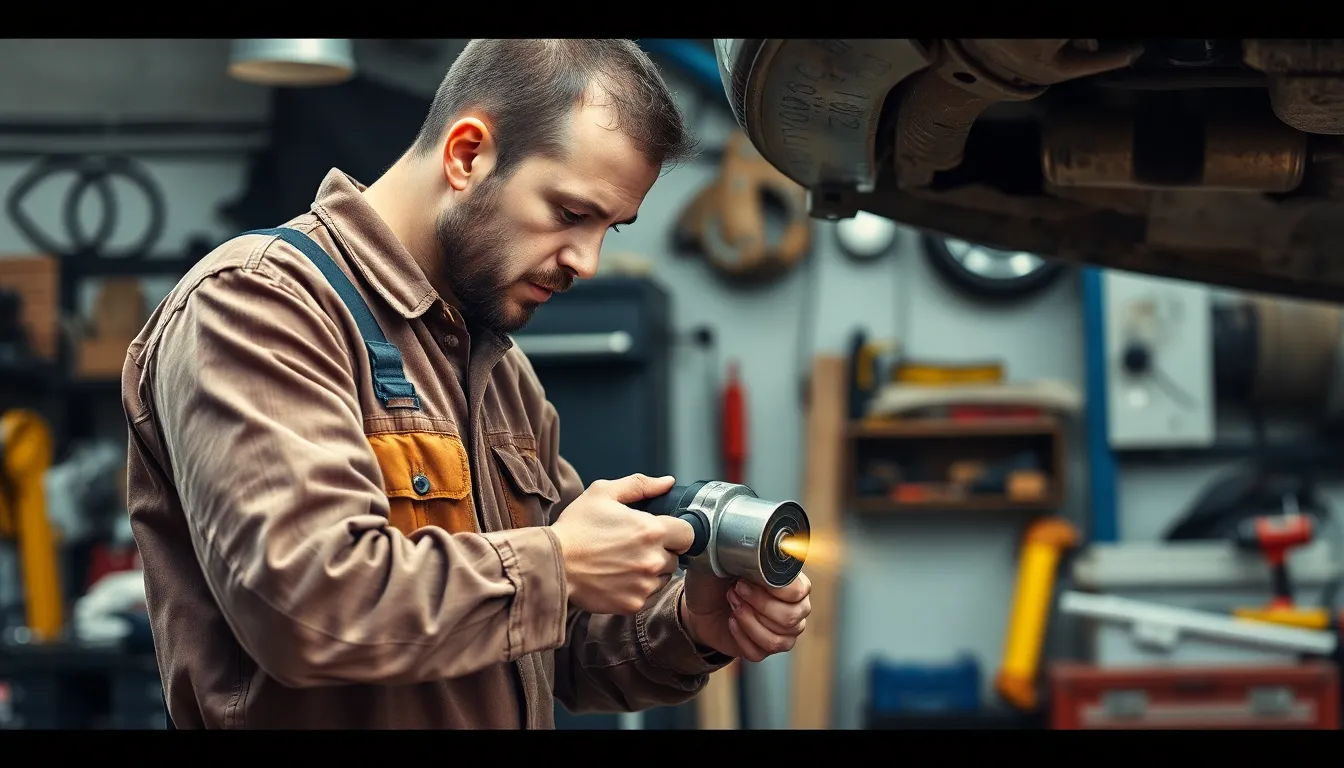
Muffler delete costs range from $100 to $200 for most vehicle modifications. Professional installations can reach $500 depending on complexity and custom requirements.
DIY Muffler Delete Costs
DIY muffler delete projects cost between $50 and $200 for most vehicle owners. Basic tools including saws and clamps range from $50 to $100 for the complete setup. Replacement piping adds $20 to $100 to the total project cost when straight pipe sections are required.
Equipment includes angle grinders, pipe cutters, welding equipment, and exhaust clamps for secure connections. Materials consist of straight pipe sections, gaskets, and mounting hardware to complete the installation. Time investment typically spans 2 to 4 hours depending on vehicle accessibility and exhaust configuration.
Cost breakdown for DIY installations:
| Component | Price Range |
|---|---|
| Tools | $50 – $100 |
| Piping | $20 – $100 |
| Hardware | $10 – $50 |
| Total DIY Cost | $50 – $200 |
Professional Installation Costs
Professional muffler delete installations cost between $150 and $500 for standard setups. Labor rates range from $75 to $150 per hour across different service locations. Custom installations exceed $500 when high performance modifications are involved.
Labor costs account for 60-70% of professional installation expenses. Parts pricing includes straight pipes at $100 to $300 depending on material quality and diameter specifications. Installation complexity varies based on exhaust routing and welding requirements for each vehicle type.
Service centers offer warranties ranging from 6 months to 2 years on completed installations. Custom fabrication adds $200 to $400 for unique exhaust configurations and performance oriented setups. Total investment averages $375 including parts and labor for most professional installations.
| Service Component | Cost Range |
|---|---|
| Labor (2-3 hours) | $150 – $450 |
| Parts & Materials | $100 – $300 |
| Custom Work | $200 – $400 |
| Total Professional Cost | $150 – $500+ |
Factors That Affect Muffler Delete Pricing
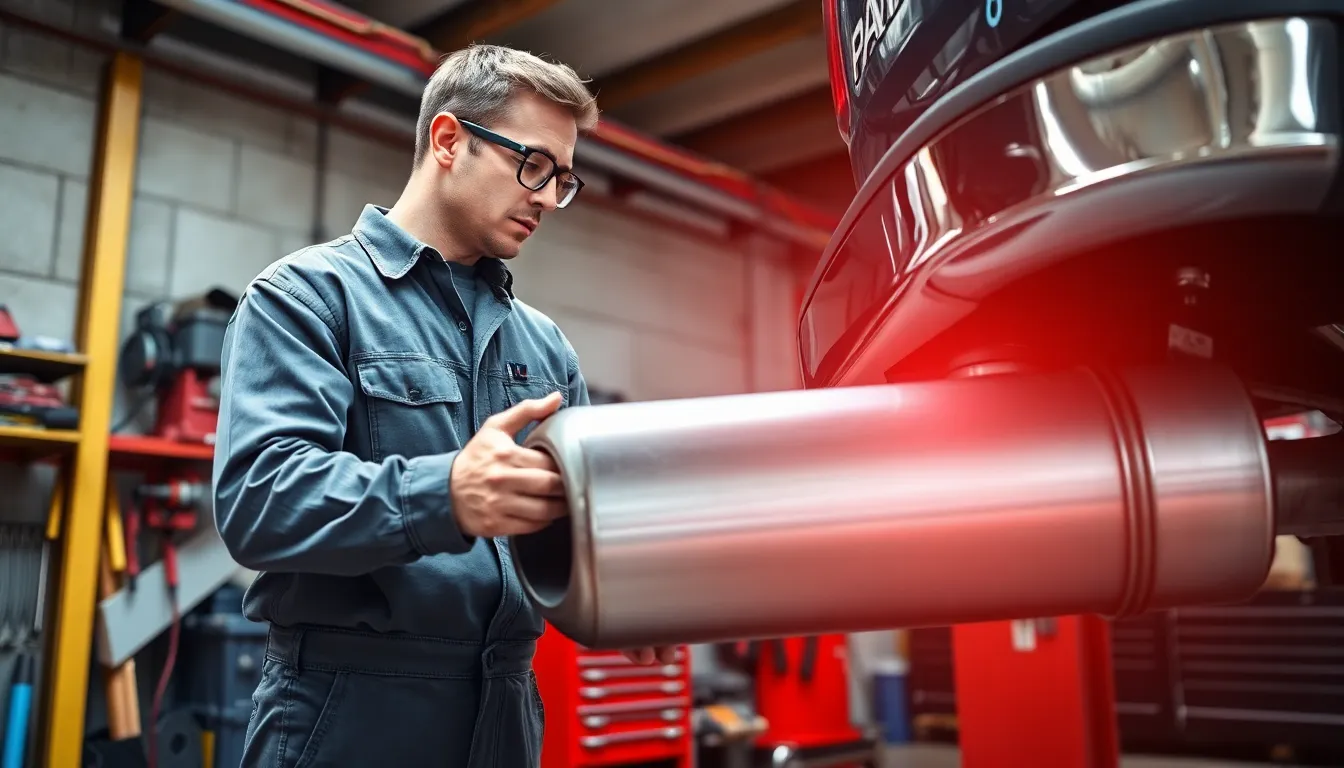
Several key variables determine the final cost of your muffler delete installation. Understanding these factors helps you budget accurately and choose the right approach for your exact situation.
Vehicle Type and Size
Your car’s make and model significantly influences both parts and labor costs for muffler delete installations. Specialized vehicles often require custom fabrication work that increases the overall price compared to common models with readily available aftermarket components.
Larger vehicles with complex exhaust systems present additional challenges during installation. Trucks and SUVs typically cost more to modify due to their extended pipe runs and additional support requirements. Performance vehicles may need specialized routing to maintain ground clearance and avoid heat sensitive components.
Engine size affects the diameter specifications for replacement pipes. V8 engines commonly require 3-inch diameter piping while 4-cylinder engines work effectively with 2.5-inch pipes. The larger diameter components cost approximately 15-25% more than standard sizing options.
Labor Rates by Location
Geographic location creates substantial variation in professional installation costs across different regions. Urban areas with higher living costs typically charge $80-120 per hour for exhaust work while rural locations average $50-80 per hour for similar services.
Specialized performance shops command premium rates due to their expertise and equipment quality. These facilities often charge 20-40% more than general automotive service centers but provide superior welding quality and custom fabrication capabilities. Local muffler shops offer competitive pricing for straightforward installations on common vehicle models.
Regional regulations impact labor requirements and associated costs. States with strict noise ordinances may require additional modifications or sound dampening components that extend installation time and increase labor expenses.
Quality of Replacement Parts
Pipe material selection directly affects both initial cost and long term durability of your muffler delete system. Aluminized steel pipes cost $30-60 for basic applications while stainless steel options range from $80-150 for equivalent sections.
Aftermarket kits designed for exact vehicle models provide the most cost effective solution for standard installations. Universal components require additional fabrication time and custom bending that increases both parts and labor costs by 25-50% compared to direct fit options.
Wall thickness specifications influence pricing and performance characteristics of replacement pipes. Standard wall pipes work adequately for most applications while heavy duty options with thicker walls cost 30-40% more but provide enhanced durability and resonance control.
Cost Comparison: Muffler Delete vs Other Exhaust Modifications
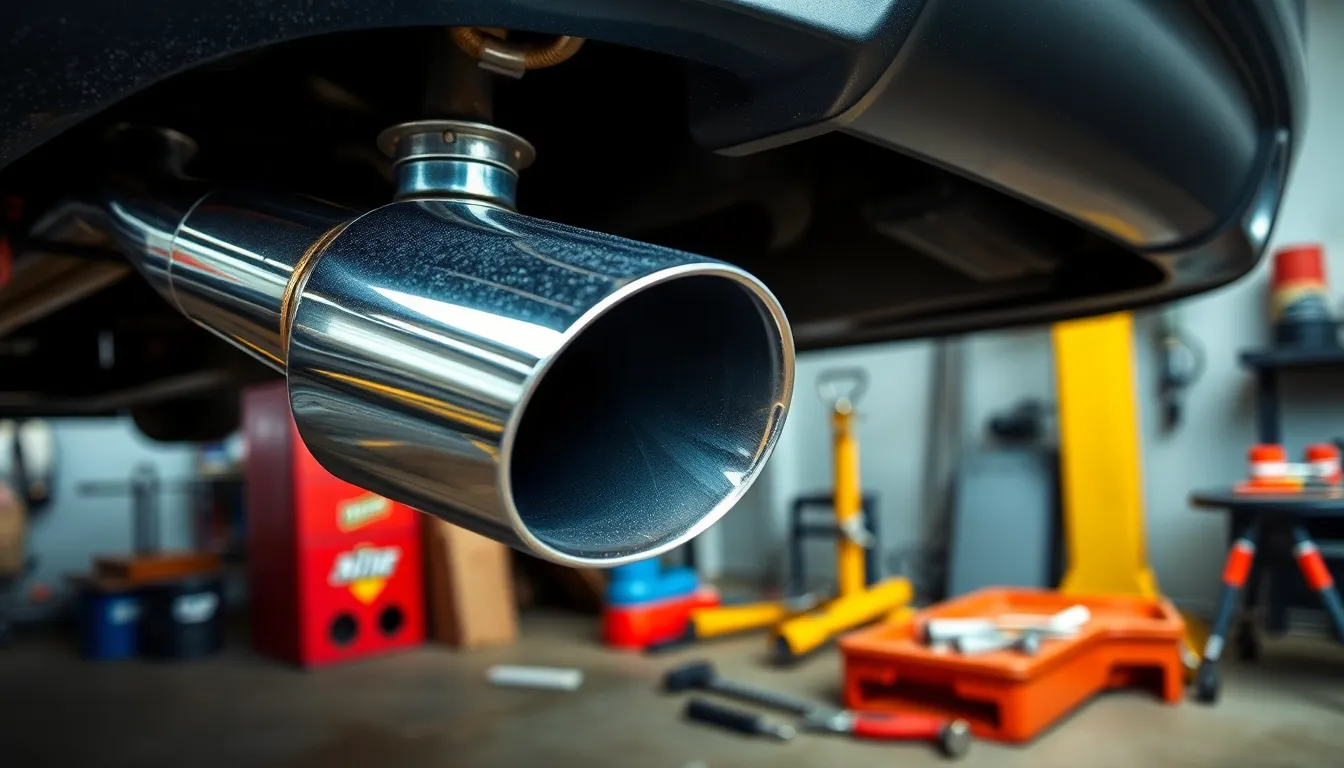
Muffler deletes offer important cost advantages over comprehensive exhaust system upgrades when comparing modification options. Our analysis shows that muffler deletes range from $50 to $500, while full cat-back systems typically start at $500 and can exceed $2,000 for premium installations.
Performance exhaust systems require multiple components including headers, catalytic converters, resonators, and specialized mufflers that drive up material costs substantially. Muffler deletes simplify the modification by replacing only the muffler component with straight piping, eliminating the need for complex fabrication work.
| Modification Type | Cost Range | Complexity Level | Performance Gain |
|---|---|---|---|
| Muffler Delete (DIY) | $50 – $200 | Low | Modest sound increase |
| Muffler Delete (Professional) | $150 – $500+ | Medium | 15-25 decibel increase |
| Cat-Back Exhaust System | $500 – $2,000+ | High | Comprehensive performance |
| Turbo-Back System | $800 – $3,000+ | Very High | Maximum flow optimization |
Catalytic converter deletes present higher costs due to emissions equipment complexity and potential legal complications in many jurisdictions. Resonator deletes typically cost $200 to $400 professionally installed, positioning them between basic muffler deletes and full system replacements.
Aftermarket performance mufflers alone can cost $150 to $800 before installation, making them comparable to complete muffler delete installations. Custom fabrication for unique vehicle applications often doubles the base cost regardless of modification type.
Labor intensity varies significantly between these modifications, with muffler deletes requiring 1-3 hours of shop time compared to 6-8 hours for complete exhaust system installations. Professional shops charge $75 to $150 per hour, making the time difference a substantial cost factor.
We find that muffler deletes provide the most cost effective entry point into exhaust modifications while delivering noticeable sound enhancement and modest performance improvements.
Potential Additional Costs to Consider
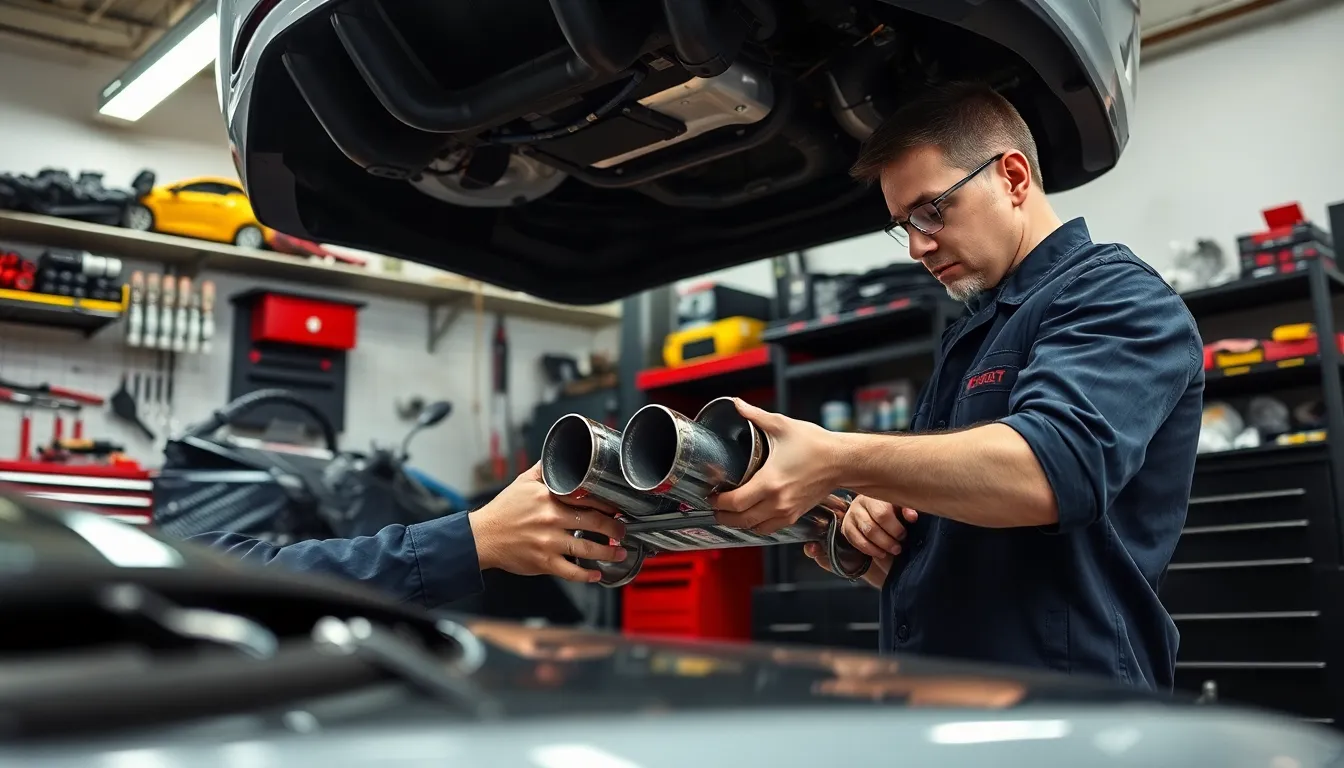
Beyond the initial installation expenses, muffler delete modifications can generate unexpected costs that affect your total investment. We’ve identified key expense categories that drivers frequently encounter during or after their modification process.
Permit and Legal Requirements
Local jurisdictions often require permits or inspections for exhaust modifications, creating regulatory expenses that vary significantly by location. We see drivers facing potential fines or mandatory reversals when modifications violate local noise or emissions laws. Cost variations depend entirely on exact municipal regulations, with some areas imposing strict decibel limits while others focus on emissions compliance.
Documentation requirements can include:
- Modification permits ($25-$100 in regulated areas)
- Post-installation inspections ($50-$150)
- Sound level testing certificates ($30-$75)
- Emissions compliance verification ($40-$120)
States like California maintain stringent exhaust modification laws, while rural jurisdictions typically impose fewer restrictions. We recommend checking local automotive codes before proceeding with any muffler delete installation.
Performance Tuning Adjustments
Engine tuning adjustments become necessary after muffler delete installations to optimize performance and prevent error codes from appearing. We observe that altered exhaust flow patterns can trigger check engine lights or affect fuel mapping in modern vehicles equipped with sophisticated engine management systems.
Professional ECU tuning costs range from $100 to $500, depending on vehicle complexity and required adjustments. Performance shops typically offer different tuning packages:
| Tuning Type | Price Range | Duration |
|---|---|---|
| Basic OBD Flash | $100-$200 | 1-2 hours |
| Custom Dyno Tune | $300-$500 | 3-4 hours |
| Remote Tune | $150-$250 | 1-3 days |
Modern vehicles with advanced emissions systems often require more extensive tuning work compared to older models. We find that turbocharged engines and vehicles with complex exhaust gas recirculation systems typically need comprehensive adjustments to maintain optimal performance after muffler deletion.
Is a Muffler Delete Worth the Cost?
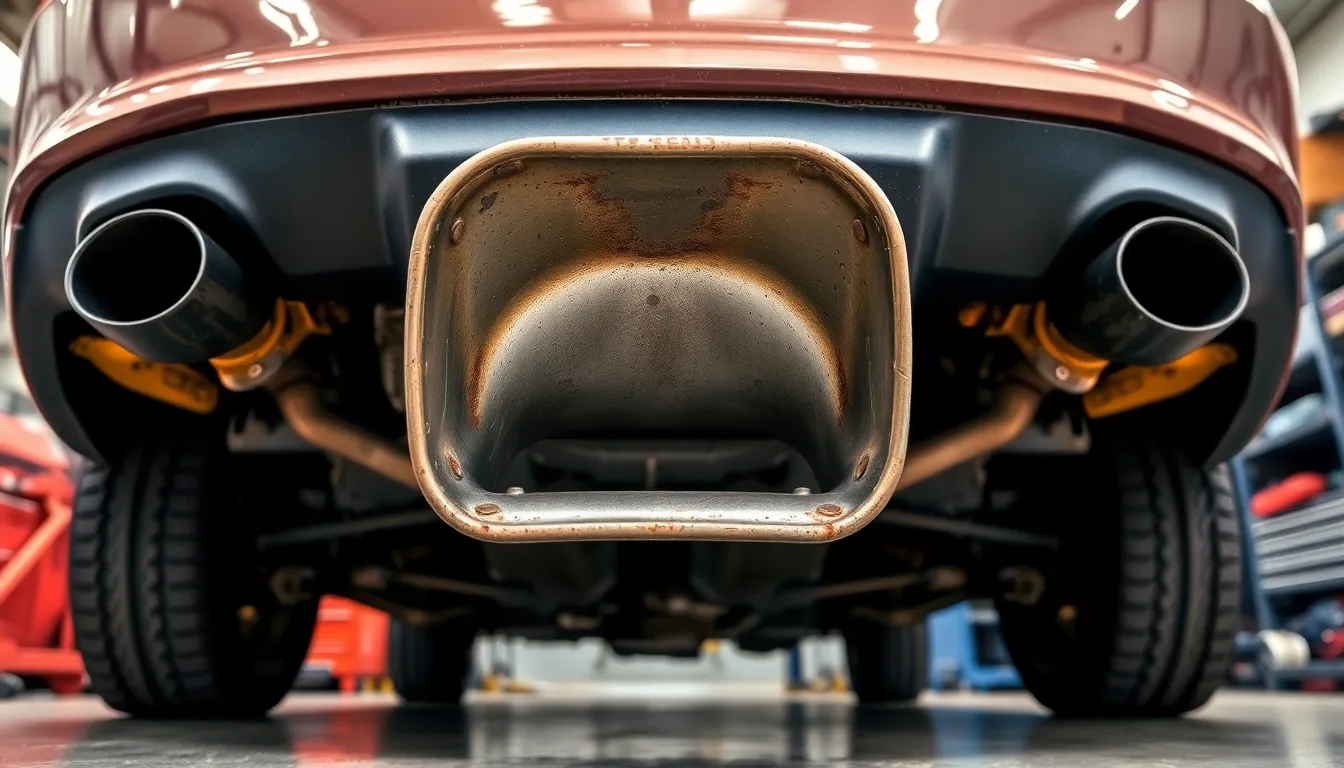
Determining the value proposition of muffler deletes requires examining both immediate benefits and long-term implications. We analyze the cost-effectiveness by comparing performance gains against financial investment and evaluating potential future considerations.
Performance Benefits vs Price
Sound enhancement represents the primary advantage of muffler deletes, delivering a louder and more aggressive exhaust note that appeals to enthusiasts seeking auditory improvements. The modification produces a 15-25 decibel increase in exhaust volume, creating the desired aggressive sound profile for $50-$500 total investment.
Exhaust flow improvements occur when removing the muffler restriction, though performance gains remain modest in most applications. Minor power increases may result from reduced back pressure, but these gains typically don’t justify the modification from a pure performance standpoint.
Cost analysis reveals muffler deletes offer excellent value compared to comprehensive exhaust system upgrades. Full cat-back systems start at $500 and exceed $2,000, while muffler deletes achieve similar sound enhancement at significantly lower costs.
| Modification Type | Cost Range | Primary Benefit |
|---|---|---|
| Muffler Delete | $50-$500 | Sound Enhancement |
| Cat-Back System | $500-$2,000+ | Sound + Performance |
| Turbo-Back System | $1,000-$3,000+ | Maximum Performance |
Weight reduction of approximately 10-20 pounds occurs with muffler removal, contributing minimally to overall vehicle performance but appealing to drivers focused on every possible improvement.
Long-term Value Considerations
Legal compliance issues pose important risks in many jurisdictions where noise and emissions regulations restrict muffler modifications. Fines range from $100-$500 per violation, potentially exceeding the initial modification cost through repeated citations.
Inspection complications arise in states requiring annual safety or emissions testing, as modified exhaust systems may fail compliance standards. Reinstallation costs for temporary compliance can reach $200-$400 annually.
Resale value impact varies among buyer demographics, with modification potentially reducing appeal to mainstream purchasers while increasing interest from performance enthusiasts. Market data suggests 10-15% value reduction for modified vehicles in general sales scenarios.
Component longevity concerns emerge when improper installation exposes exhaust components to increased stress and environmental factors. Professional installation with proper materials mitigates these risks but increases initial investment.
Insurance considerations may affect coverage terms, as some policies exclude coverage for modified vehicles or require disclosure of performance modifications. Premium increases of 5-10% occur in certain cases involving exhaust modifications.
Conclusion
We’ve covered the essential financial aspects of muffler delete modifications to help you make an well-informed choice. The $50-$500 price range offers flexibility for different budgets and installation preferences.
Remember that your total investment extends beyond the initial modification cost. Factor in potential legal requirements tuning adjustments and long-term implications when planning your budget.
Muffler deletes provide an affordable entry point into exhaust modifications compared to comprehensive system upgrades. Whether you choose DIY or professional installation the key is understanding all associated costs upfront.
Make sure to research local regulations and consider your vehicle’s exact requirements before proceeding. This preparation will help you avoid unexpected expenses and ensure a successful modification experience.
Frequently Asked Questions
What is a muffler delete and how does it work?
A muffler delete is a modification that removes the factory muffler and replaces it with a straight pipe or resonator. This allows exhaust gases to flow directly without sound dampening, resulting in a louder, more aggressive exhaust note. The modification typically increases exhaust volume by 15-25 decibels while reducing vehicle weight by 10-20 pounds.
How much does a muffler delete cost?
Muffler delete costs range from $50-$200 for DIY installations to $150-$500 for professional installations. DIY costs include piping, clamps, and basic tools. Professional installation labor accounts for 60-70% of total expenses, with pricing varying based on vehicle complexity and custom requirements.
Can I install a muffler delete myself?
Yes, muffler deletes can be installed as DIY projects with basic tools like a reciprocating saw, pipe cutters, and clamps. However, professional installation ensures proper fitment, warranties (6 months to 2 years), and compliance with local regulations. DIY installation saves on labor costs but requires mechanical knowledge and safety precautions.
What factors affect muffler delete pricing?
Several factors influence pricing: vehicle type and size (trucks/SUVs cost more), geographic location (urban areas charge higher labor rates), pipe material quality (aluminized steel vs. stainless steel), and customization requirements. Specialized vehicles may need custom fabrication, increasing costs significantly compared to standard applications.
Are there additional costs beyond the initial installation?
Yes, additional costs may include modification permits, post-installation inspections, sound level testing certificates, and emissions compliance verification. Performance tuning adjustments might be necessary to optimize engine performance and prevent error codes. Legal fines for noise violations can also exceed the initial modification cost in some areas.
How does a muffler delete compare to other exhaust modifications?
Muffler deletes ($50-$500) are significantly cheaper than full cat-back systems ($500-$2,000+). They offer a cost-effective entry point for sound enhancement with modest performance gains. While full exhaust systems provide greater performance improvements, muffler deletes deliver excellent value for enthusiasts seeking louder exhaust notes without major investment.
Is a muffler delete worth the investment?
Muffler deletes offer excellent value for sound enhancement seekers, providing aggressive exhaust notes at minimal cost. However, performance gains are modest, and legal compliance issues may arise. Consider long-term implications including potential resale value impact, insurance disclosure requirements, and local noise regulations before proceeding with the modification.
Will a muffler delete affect my vehicle’s resale value?
Modified vehicles may lose appeal to mainstream buyers but can attract performance enthusiasts. The impact varies based on local market preferences and modification quality. Professional installation and documentation help maintain value. Some buyers view modifications positively, while others prefer stock configurations, making resale impact unpredictable.

